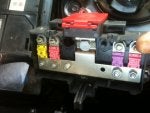hi there I have a 2005 Mercedes c230 compressor sport sedan. I was recently out of country so I had parked the car for about a month or so. when I came back, I started the car and I got the message in the dash sayin "Battery/ Alternator malfunction. visit workshop." I checked the battery and its charging fine, but it shows alternator charging low. I need to check the alternator fuse but can't seem to locate it because there is no fuse map. anyone would have an idea where I could locate the alternator fuse? thank you in advance

mbont519
mercedes c230 kompressor alternator problem
mbont519
Discussion starter
1 post
·
Joined 2015
- Add to quote
hi there I have a 2005 Mercedes c230 compressor sport sedan. I was recently out of country so I had parked the car for about a month or so. when I came back, I started the car and I got the message in the dash sayin "Battery/ Alternator malfunction. visit workshop." I checked the battery and its charging fine, but it shows alternator charging low. I need to check the alternator fuse but can't seem to locate it because there is no fuse map. anyone would have an idea where I could locate the alternator fuse? thank you in advance
102 posts
·
Joined 2015
THere is a battery box terrminal box with fusible links next to the battery
See pics attached
Hope this helps
May just need to have the car attached to a Mercedes SDS tool to clear the code. If all is good that usually will gt rid of the message
Good Luck
See pics attached
Hope this helps
May just need to have the car attached to a Mercedes SDS tool to clear the code. If all is good that usually will gt rid of the message
Good Luck
Attachments
-
43.1 KB Views: 6,917
-
125.2 KB Views: 8,107
27,459 posts
·
Joined 2004
Check your voltage - 12.6v at rest, 11v during cranking, 14v+ at idle. Less than that and you have a battery or alternator problem.
610 posts
·
Joined 2017
I have the same car with a similar problem.
When I was working on another issue, I dropped a socket wrench. One end landed on the alternator power cable and the other touched the frame. I saw a spark and heard a pop.
When I started the car, I had a battery-alternator warning:
![Image]()
Warning message
My initial reaction (in addition to being angry at myself) was that I had damaged the alternator. I removed the alternator and took it to an alternator shop and the owner tested it and said it was working fine. Based on my description of the accident, he suggested that I might have damaged a fuse or other component in the battery-alternator circuit. Since I have access to a parts car, I picked up the distribution block that is connected to the battery and replaced mine. (It is my understanding that it contains fusible links and I thought I could have damaged one or more of them.)
![Image]()
Distribution block
That didn't solve the problem. The car starts fine. When I start the car and watch the voltage reading on the center screen, I start at 12.4 volts. While the starter is turning, it reads slightly under 12 volts. When the car is running, it reads 12.1 or 12 volts. The battery seems to be holding a charge well and it is about 2-years old.
I'm seeking suggestions on the next place to look for a damaged component. I checked the fuse diagram, and I could not find a fuse listed for the alternator.
When I was working on another issue, I dropped a socket wrench. One end landed on the alternator power cable and the other touched the frame. I saw a spark and heard a pop.
When I started the car, I had a battery-alternator warning:

Warning message
My initial reaction (in addition to being angry at myself) was that I had damaged the alternator. I removed the alternator and took it to an alternator shop and the owner tested it and said it was working fine. Based on my description of the accident, he suggested that I might have damaged a fuse or other component in the battery-alternator circuit. Since I have access to a parts car, I picked up the distribution block that is connected to the battery and replaced mine. (It is my understanding that it contains fusible links and I thought I could have damaged one or more of them.)

Distribution block
That didn't solve the problem. The car starts fine. When I start the car and watch the voltage reading on the center screen, I start at 12.4 volts. While the starter is turning, it reads slightly under 12 volts. When the car is running, it reads 12.1 or 12 volts. The battery seems to be holding a charge well and it is about 2-years old.
I'm seeking suggestions on the next place to look for a damaged component. I checked the fuse diagram, and I could not find a fuse listed for the alternator.
610 posts
·
Joined 2017
I obtained a wiring diagram for the system:
![Image]()
I then ran a scan with the STAR System.
![Image]()
The system returned code 2062-002 - Alternator serial interface. No connection to the control module
N3/10 (ME-SFI [ME] control unit)
Based on the diagram, this seems to suggest that there was:
1. Damage to the blue wire that attaches to the control module
2. (Worse case scenario) a damaged control module.
3. Damaged connector to the alternator
4. Damaged voltage regulator on the alternator itself since this attaches to the blue wire.
Any suggestions on my next step? At this time, I am ruling out replacing the alternator pending the results from other trouble-shooting.

I then ran a scan with the STAR System.
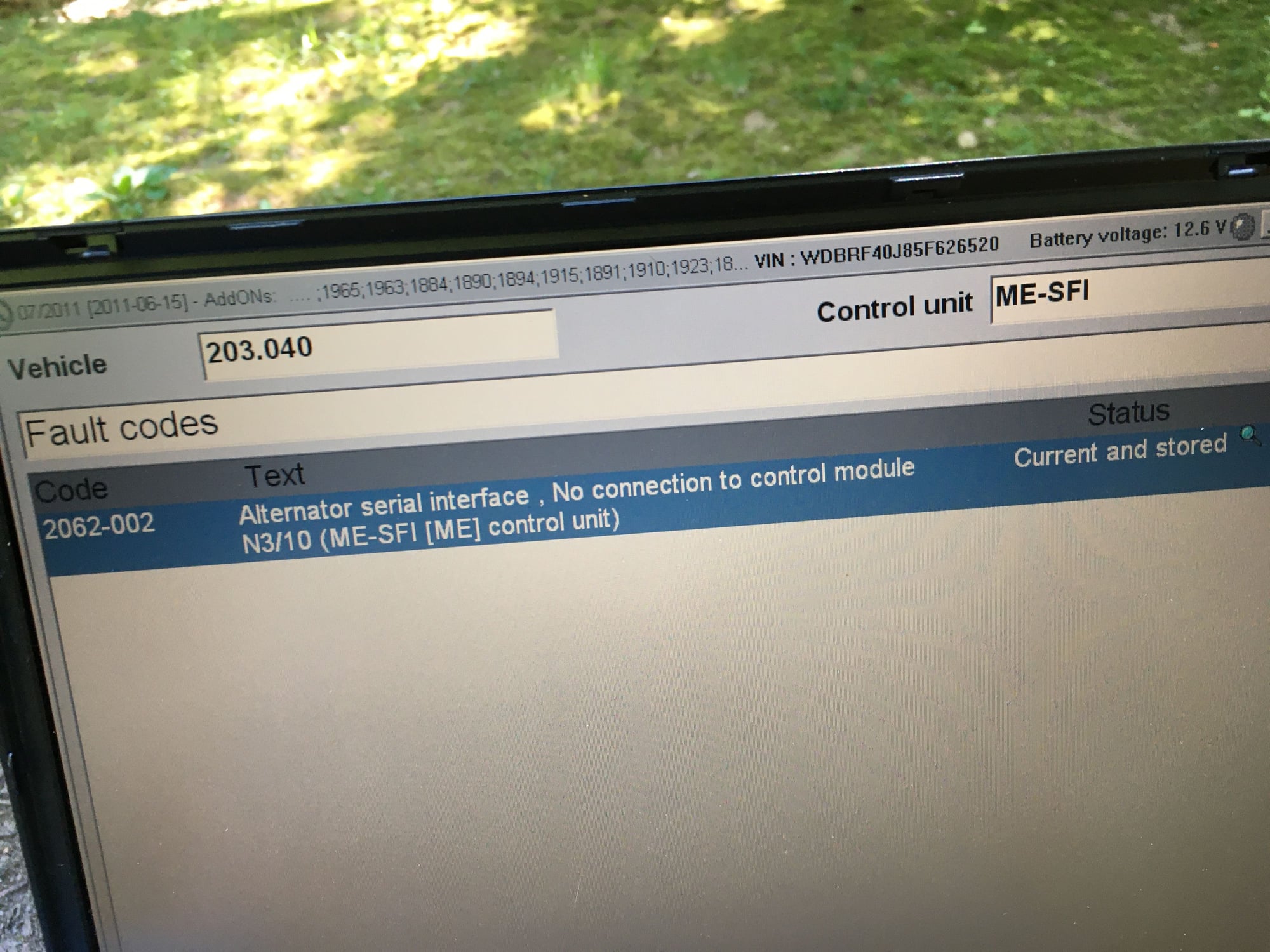
The system returned code 2062-002 - Alternator serial interface. No connection to the control module
N3/10 (ME-SFI [ME] control unit)
Based on the diagram, this seems to suggest that there was:
1. Damage to the blue wire that attaches to the control module
2. (Worse case scenario) a damaged control module.
3. Damaged connector to the alternator
4. Damaged voltage regulator on the alternator itself since this attaches to the blue wire.
Any suggestions on my next step? At this time, I am ruling out replacing the alternator pending the results from other trouble-shooting.
64 posts
·
Joined 2017
You'd need to use an oscilloscope, like the following:
Hantek 1008C 8CH Automotive Diagnostic PC Oscilloscope 2.4MSa/s USB 2.0 bandwidth 100K Program Generator
Price: $93.90
Note, it's from a China company, and I wouldn't suggest installing their software on your main PC.
Imho, I'd prefer a National Instruments USB scope (~$200+) instead. Or, a PicoScope (~$800++).
However, I wouldn't need either, since I have a "number" of storage oscilloscopes, etc. (That's what I do.)
That single wire is a LIN bus wire.
![Image]()
So, you need to see:
A) If LIN-bus data is going from the SAM to the module(I expect it is).
B) If LIN-bus data is going back from the module to the SAM(I expect it is).
C) Is the LIN-bus data going from the module to the Alternator.
D) Is the LIN-bus data back going from the Alternator to the module.
Some links:
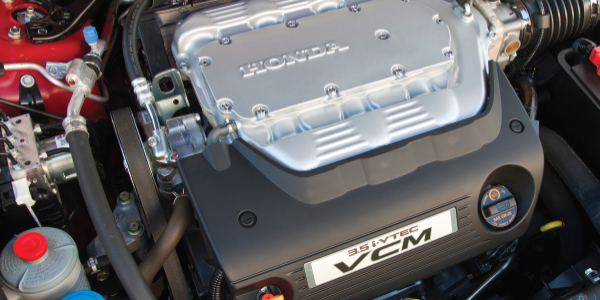
 www.underhoodservice.com
www.underhoodservice.com
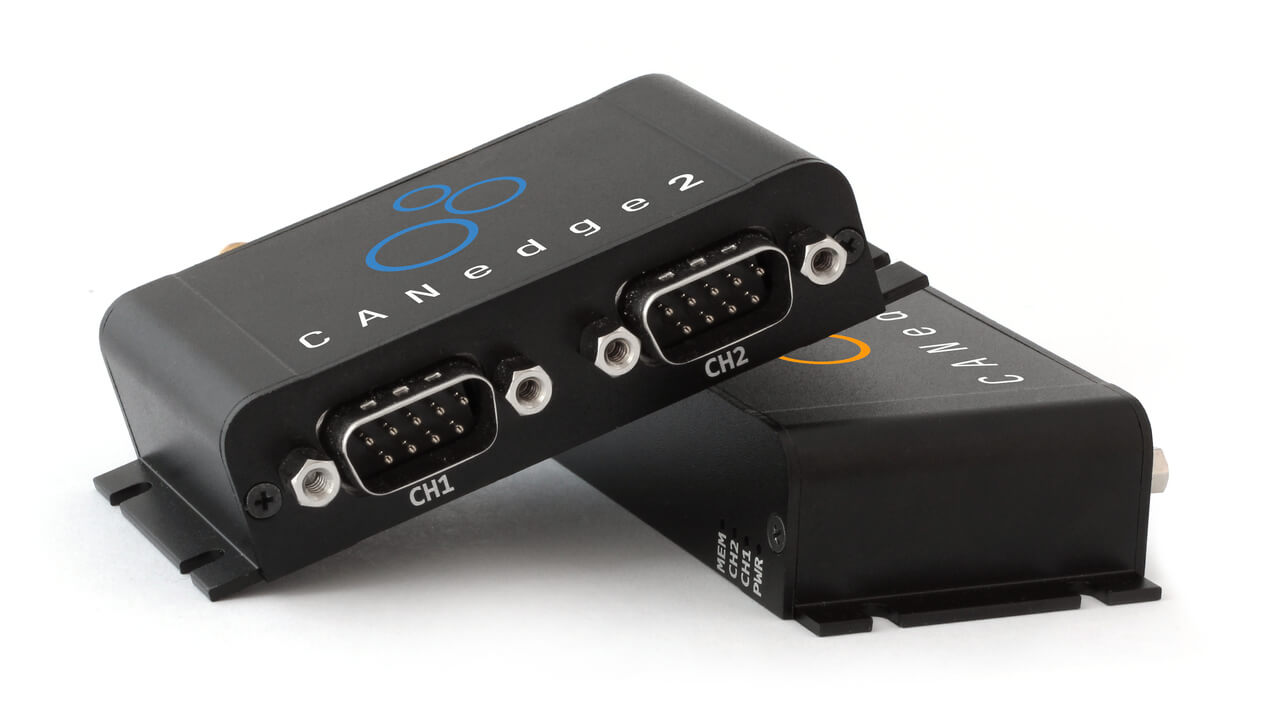
 www.csselectronics.com
www.csselectronics.com
Fwiw, I'll be swamped next week. I may not reply for a few days.
Good Luck!
Amazon.com: Hantek 1008C+ 8CH Automotive Diagnostic PC Oscilloscope 2.4MSa/s USB 2.0 bandwidth 100K Program Generator: Home Improvement
Buy Hantek 1008C+ 8CH Automotive Diagnostic PC Oscilloscope 2.4MSa/s USB 2.0 bandwidth 100K Program Generator: Oscilloscopes - Amazon.com ✓ FREE DELIVERY possible on eligible purchases
www.amazon.com
Price: $93.90
Note, it's from a China company, and I wouldn't suggest installing their software on your main PC.
Imho, I'd prefer a National Instruments USB scope (~$200+) instead. Or, a PicoScope (~$800++).
However, I wouldn't need either, since I have a "number" of storage oscilloscopes, etc. (That's what I do.)
That single wire is a LIN bus wire.

So, you need to see:
A) If LIN-bus data is going from the SAM to the module(I expect it is).
B) If LIN-bus data is going back from the module to the SAM(I expect it is).
C) Is the LIN-bus data going from the module to the Alternator.
D) Is the LIN-bus data back going from the Alternator to the module.
Some links:

Honda LIN Line Controlled Charging Systems
On older vehicles, the alternator and engine were never really connected. The alternator was internally or externally self-regulated to a voltage, but that was it.

LIN Bus Explained - A Simple Intro [2025]
LIN bus tutorial: In this intro you'll learn the LIN protocol basics, master/slave LIN communication, LIN frames, the LDF vs NCF, LIN ISO TP - and LIN data logging
Amazon.com: Hantek 1008C+ 8CH Automotive Diagnostic PC Oscilloscope 2.4MSa/s USB 2.0 bandwidth 100K Program Generator: Home Improvement
Buy Hantek 1008C+ 8CH Automotive Diagnostic PC Oscilloscope 2.4MSa/s USB 2.0 bandwidth 100K Program Generator: Oscilloscopes - Amazon.com ✓ FREE DELIVERY possible on eligible purchases
www.amazon.com
Fwiw, I'll be swamped next week. I may not reply for a few days.
Good Luck!
610 posts
·
Joined 2017
Thanks again for your reply. I'm not quite ready to buy an oscilloscope, but I'm beginning to think it may be necessary.
Since my last update I decided to take a chance and see whether the voltage regulator was damaged. I replaced it, but it did not fix the problem.
I checked the voltage at the alternator with the car running and it was negligible - approximately 0.4 volts. I connected the STAR system and it read the same fault code I posted previously - 2062-002 - Alternator serial interface. No connection to the control module. When I ran the STAR system, there were menu choices for alternator testing, but they would not run on my system. (Jake and I bought the system used and I don't know much about its origins. It may be a Chinese clone.) I've posted a video showing what happens when I attempt to use the alternator diagnosis menu. If you pause it at about the half-way point you should see a message that says, "DAS and WIS are active at the same time. It is possible to switch over between the systems with the key combinations ALT + TAB." I'm not sure whether doing that will allow the test to run, but I will give it a try later.
Screen display during alternator test attempt
I've also posted photos showing the data connector and the battery connector to the alternator and the voltage regulator that I removed. I cannot see any visible damage.
![Image]()
Data and battery connections
![Image]()
Voltage regulator removed from alternator
![Image]()
I think the problems could be:
1. Damage to another part of the alternator
2. Damage to the communication system between the ECU and the alternator which is preventing the alternator from receiving a signal to turn on.
I was thinking of buying this: Computer Safe Automotive Logic Probe and using it to probe the connection from the ECU to the alternator. My thought process is that it will show whether there is a signal coming from the ECU.
I could buy a rebuilt alternator, but before I do that I want to be sure it is the problem.
Since my last update I decided to take a chance and see whether the voltage regulator was damaged. I replaced it, but it did not fix the problem.
I checked the voltage at the alternator with the car running and it was negligible - approximately 0.4 volts. I connected the STAR system and it read the same fault code I posted previously - 2062-002 - Alternator serial interface. No connection to the control module. When I ran the STAR system, there were menu choices for alternator testing, but they would not run on my system. (Jake and I bought the system used and I don't know much about its origins. It may be a Chinese clone.) I've posted a video showing what happens when I attempt to use the alternator diagnosis menu. If you pause it at about the half-way point you should see a message that says, "DAS and WIS are active at the same time. It is possible to switch over between the systems with the key combinations ALT + TAB." I'm not sure whether doing that will allow the test to run, but I will give it a try later.
Screen display during alternator test attempt
I've also posted photos showing the data connector and the battery connector to the alternator and the voltage regulator that I removed. I cannot see any visible damage.

Data and battery connections
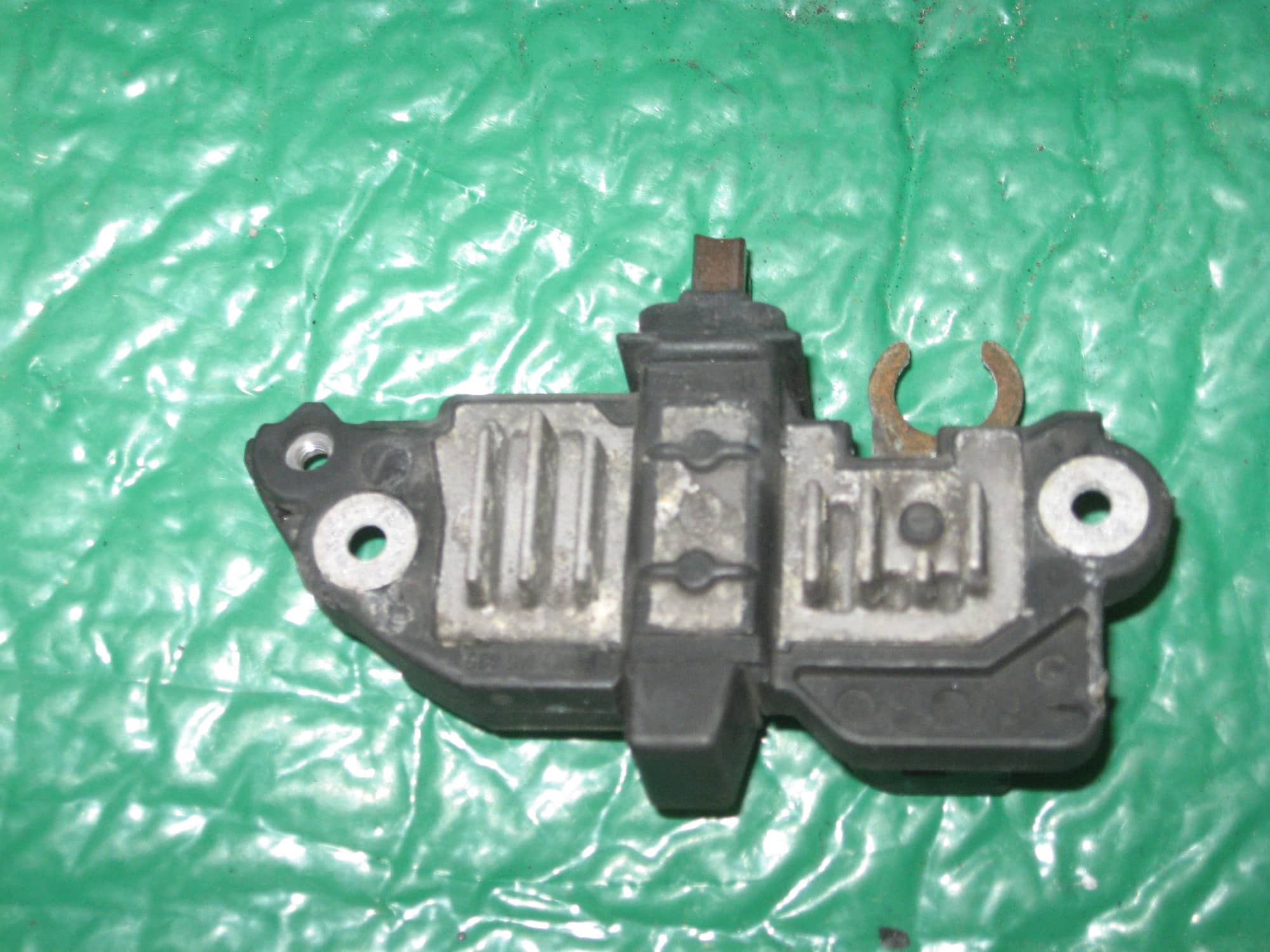
Voltage regulator removed from alternator

I think the problems could be:
1. Damage to another part of the alternator
2. Damage to the communication system between the ECU and the alternator which is preventing the alternator from receiving a signal to turn on.
I was thinking of buying this: Computer Safe Automotive Logic Probe and using it to probe the connection from the ECU to the alternator. My thought process is that it will show whether there is a signal coming from the ECU.
I could buy a rebuilt alternator, but before I do that I want to be sure it is the problem.
610 posts
·
Joined 2017
A post on MB World suggested that my accident with the wrench had damaged a fusible link that is in the cable that runs from the starter to the alternator. I unfastened the cable and was able to confirm that that was the problem.
However, the term "unfastened the cable" understates the complexity of the task. The configuration of the M271 engine required me to (1) Dismount a refrigerant line, (2) Detach a steering coupling and (3) Partially detach the supercharger dampener. Then, I had enough room to put a 13mm wrench on the bolt holding the battery/starter/alternator wire in place and remove it.
Once I had the bolt off, I was able to pull it over the bell housing. I had to open up the protective casing to access the 175-amp fusible link. Then, I verified that the link had blown with my test light. The battery side of the link had power:
![Image]()
The other side did not.
Unfortunately, it does not appear that a replacement link can be swapped in. I searched on the term "175-amp fusible link" and couldn't find anything that looked like the one in the car. The fusible links that my search identified had different configurations. It looks like the one Mercedes used was crimped on using a machine that could generate a significant amount of force.
![Image]()
Note how the fusible link is crimped in place.
I want the repair I make to be reliable although I can find 175 amp fusible links, they look like this:
![Image]()
If I use a fusible link like this, I need to find a way to install that won't allow it to come loose over time. A better option may be to replace the entire cable with one from a recycling yard. I have access to a C230 that I used to harvest replacement parts. Unfortunately, it is sitting on flat tires in the owner's back yard. To remove the bolt on the starter, I must get under the car and I cannot think of a safe way to do that.
I found one on an auction site for a coupe, but the listing doesn't confirm that the cable will fit a sedan. I may take a chance and buy it anyway.
I will appreciate any suggestions.
However, the term "unfastened the cable" understates the complexity of the task. The configuration of the M271 engine required me to (1) Dismount a refrigerant line, (2) Detach a steering coupling and (3) Partially detach the supercharger dampener. Then, I had enough room to put a 13mm wrench on the bolt holding the battery/starter/alternator wire in place and remove it.
Once I had the bolt off, I was able to pull it over the bell housing. I had to open up the protective casing to access the 175-amp fusible link. Then, I verified that the link had blown with my test light. The battery side of the link had power:
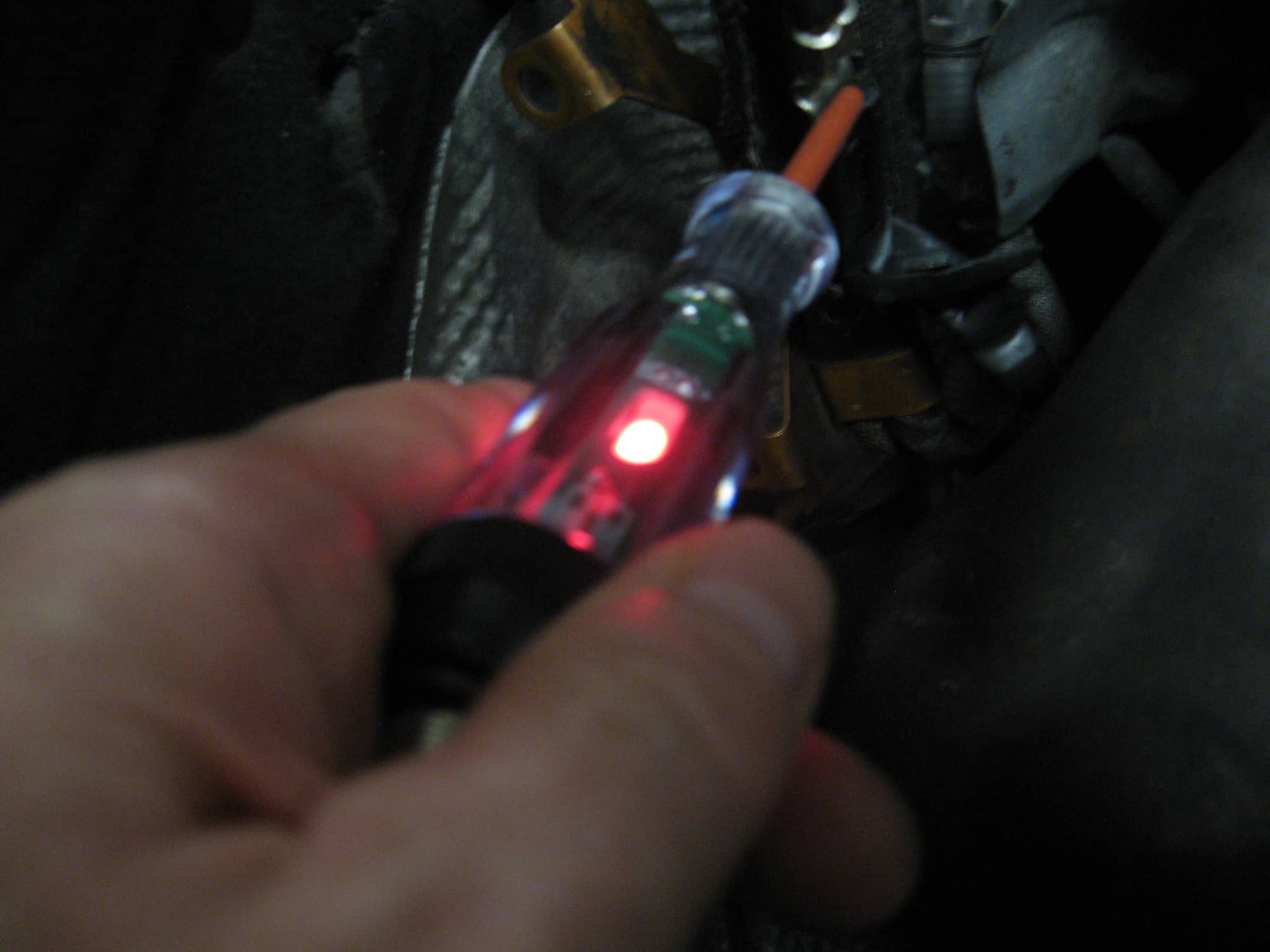
The other side did not.
Unfortunately, it does not appear that a replacement link can be swapped in. I searched on the term "175-amp fusible link" and couldn't find anything that looked like the one in the car. The fusible links that my search identified had different configurations. It looks like the one Mercedes used was crimped on using a machine that could generate a significant amount of force.
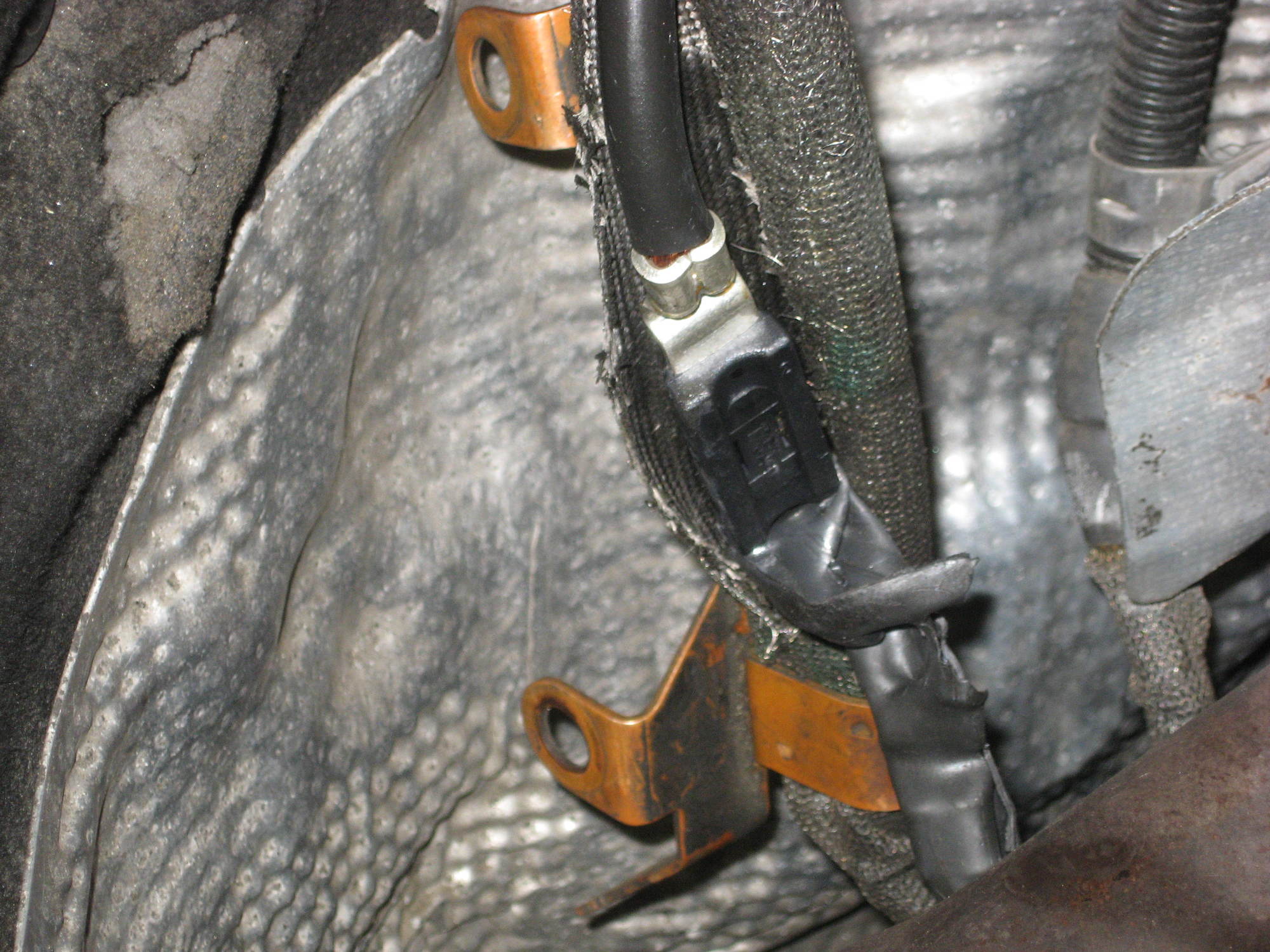
Note how the fusible link is crimped in place.
I want the repair I make to be reliable although I can find 175 amp fusible links, they look like this:

If I use a fusible link like this, I need to find a way to install that won't allow it to come loose over time. A better option may be to replace the entire cable with one from a recycling yard. I have access to a C230 that I used to harvest replacement parts. Unfortunately, it is sitting on flat tires in the owner's back yard. To remove the bolt on the starter, I must get under the car and I cannot think of a safe way to do that.
I found one on an auction site for a coupe, but the listing doesn't confirm that the cable will fit a sedan. I may take a chance and buy it anyway.
I will appreciate any suggestions.
610 posts
·
Joined 2017
I looked more closely at the fusible link assembly. There was a small cover that I could remove. Here's a photo of the fusible link:
![Image]()
The link is blown
Does anyone have any ideas about (1) how to replace the link and (2) where can I find the replacement 175-amp link?
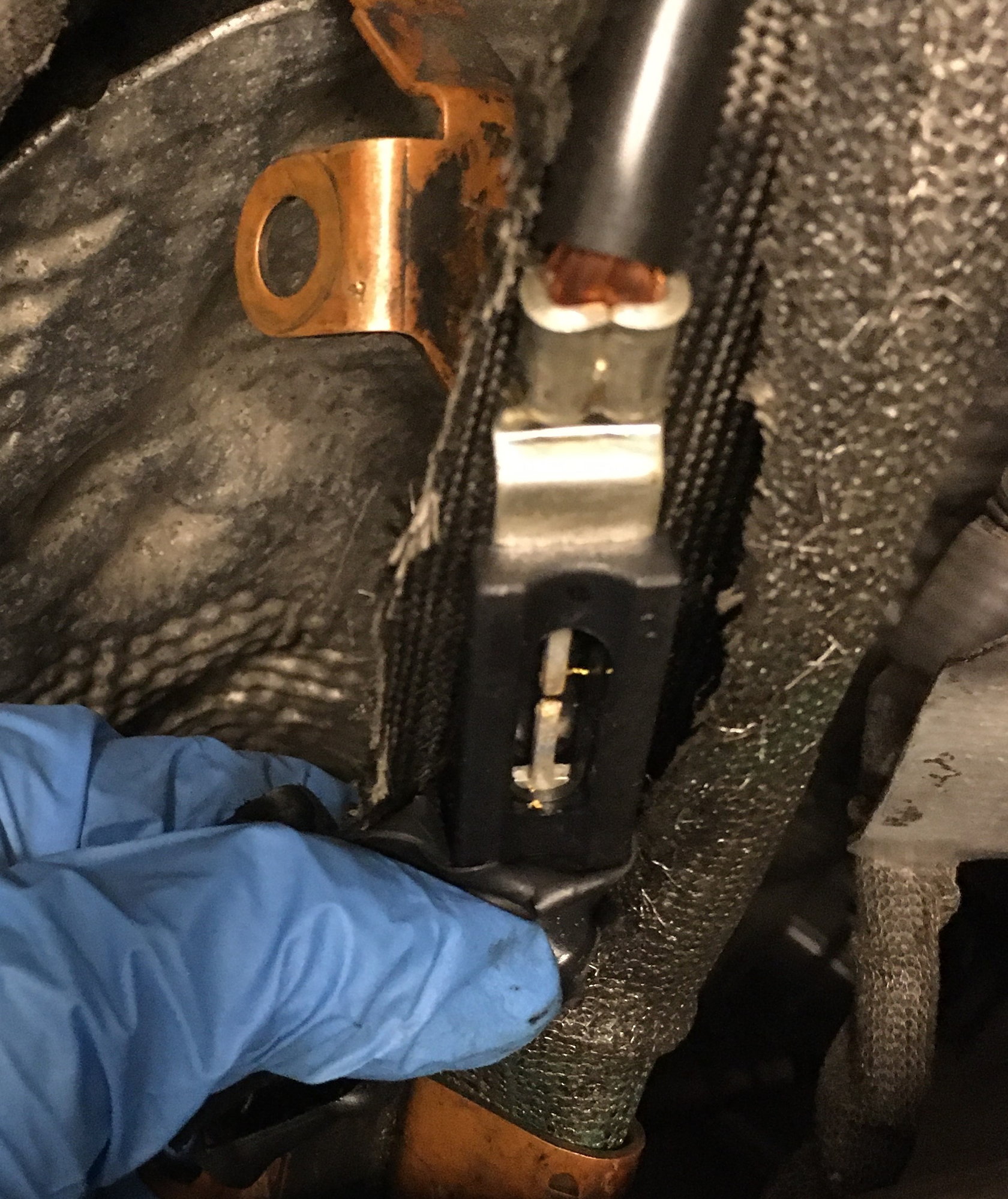
The link is blown
Does anyone have any ideas about (1) how to replace the link and (2) where can I find the replacement 175-amp link?
610 posts
·
Joined 2017
I installed the new battery/starter/alternator cable. (If anyone else ever needs to do this, here's a link to the the instructions: Starter Replacement - M271 ) There are also videos on YouTube. The cable has to fit between the starter and the engine block or the cable end will block the reinstallation of the supercharger dampener. Look at the routing of the cable as you remove it, and you will see how to do it. It may be easier to route the cable if you remove the starter. I did not remove the starter because I couldn't remove one of the bolts holding it in place due to the size of the head of my ratchet. If I have to replace the starter, I will need to buy a ratchet with a more compact head or use a combination of a swivel and extensions to access it. I saw some people claim that they did not need to remove the supercharger dampener to access the bolt holding the cable on the end of the starter. I don't see how they did that. In addition to the dampener, I had to disconnect the steering linkage and move a refrigerant line.
To make a long story short, I now have power to the alternator. Unfortunately, I still have the alternator-battery warning light. When I display the voltage on the center information screen with the car running it shows 12.1 volts instead of the 14-14.2 volts it would display before I damaged the system.
When I connect the STAR tool, it displays the same fault code as it did before I replaced the cable - 2062-02-Alternator Serial Interface - No connection to the control module. As noted in previous posts, the data line to the ECU has continuity. However, I have not used an oscilloscope as Red Gray suggested to read the data.
I had previously had the alternator tested at a rebuild shop on a somewhat primitive looking machine. The technician gave it a passing grade. I replaced the voltage regulator on it because the brushes were worn. I had it retested at an Advance Auto and they said it failed. The Advance Auto test machine is capable of printing out data, but the technician didn't know how to do it. He did tell me the voltage regulator was OK.
It looks like my next step may be to replace the alternator with a rebuilt unit. Before I spend $200 throwing another part at the car, does anyone have other suggestions? I think my second option would be to follow Red Gray's advice and either obtain an oscilloscope to read the data or find someone who has the equipment and can do it for me.
To make a long story short, I now have power to the alternator. Unfortunately, I still have the alternator-battery warning light. When I display the voltage on the center information screen with the car running it shows 12.1 volts instead of the 14-14.2 volts it would display before I damaged the system.
When I connect the STAR tool, it displays the same fault code as it did before I replaced the cable - 2062-02-Alternator Serial Interface - No connection to the control module. As noted in previous posts, the data line to the ECU has continuity. However, I have not used an oscilloscope as Red Gray suggested to read the data.
I had previously had the alternator tested at a rebuild shop on a somewhat primitive looking machine. The technician gave it a passing grade. I replaced the voltage regulator on it because the brushes were worn. I had it retested at an Advance Auto and they said it failed. The Advance Auto test machine is capable of printing out data, but the technician didn't know how to do it. He did tell me the voltage regulator was OK.
It looks like my next step may be to replace the alternator with a rebuilt unit. Before I spend $200 throwing another part at the car, does anyone have other suggestions? I think my second option would be to follow Red Gray's advice and either obtain an oscilloscope to read the data or find someone who has the equipment and can do it for me.
1 post
·
Joined 2022
Hi Kevin, thank you very much for this information!
I made the same rookie mistake and following your instructions I was able to solve the problem.
Regarding the Warning Ligth on the dashboard, do you fix it, is there any solution?
Please let me know.
Thanks in advance.
Martin.
I made the same rookie mistake and following your instructions I was able to solve the problem.
Regarding the Warning Ligth on the dashboard, do you fix it, is there any solution?
Please let me know.
Thanks in advance.
Martin.
1 post
·
Joined 2021
hi kevinH2000 have you get your alternator problem solved ..if yes please write it down ..cause i have the same problem
610 posts
·
Joined 2017
This thread shows how I finally fixed my alternator problem
Please let me know if you have questions. Good luck with your work.
Please let me know if you have questions. Good luck with your work.
610 posts
·
Joined 2017
Start reading at post #112 of this thread.
There is a data cable on the alternator that connects it to pin #47 on the ECU connector. I installed a jumper wire from the alternator that removed the original wire from the circuit. This is the action that finally removed the warning from the dash.
Please note that prior to installing the jumper wire I had taken the car to the dealer and the dealer replaced the ECU which is an expensive repair. I really don't know whether replacing the ECU was part of the solution. I do know that replacing the ECU alone didn't fix the problem.
There is a data cable on the alternator that connects it to pin #47 on the ECU connector. I installed a jumper wire from the alternator that removed the original wire from the circuit. This is the action that finally removed the warning from the dash.
Please note that prior to installing the jumper wire I had taken the car to the dealer and the dealer replaced the ECU which is an expensive repair. I really don't know whether replacing the ECU was part of the solution. I do know that replacing the ECU alone didn't fix the problem.
-
?
-
?
-
?
-
?
-
?
-
?
-
?
-
?
-
?
-
?
-
?
-
?
-
?
-
?
-
?
-
?
-
?
-
?
-
?
-
?
- posts
- 7.8M
- members
- 748K
- Since
- 1999
BenzWorld.org forum is one of the largest Mercedes-Benz owner websites offering the most comprehensive collection of Mercedes-Benz information anywhere in the world. The site includes MB Forums, News, Galleries, Publications, Classifieds, Events and much more!


